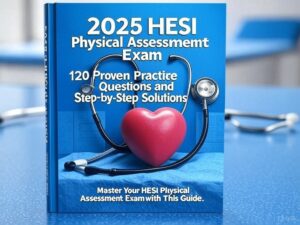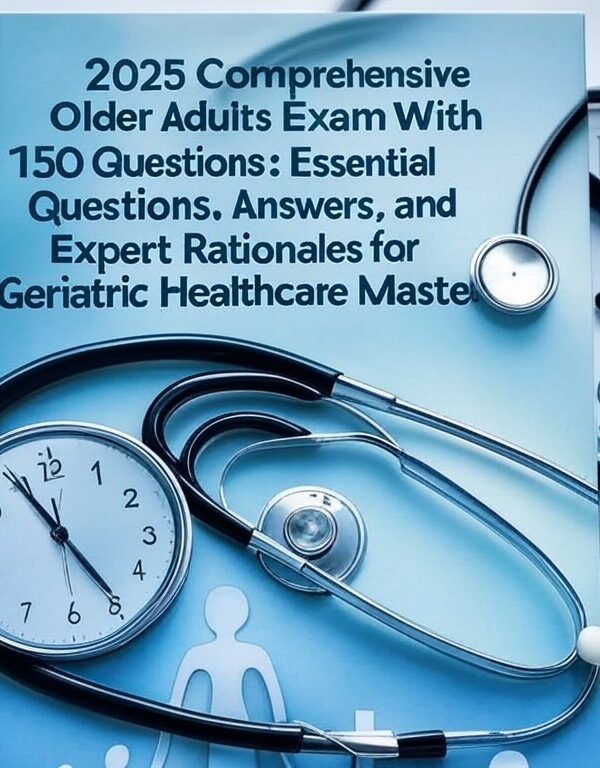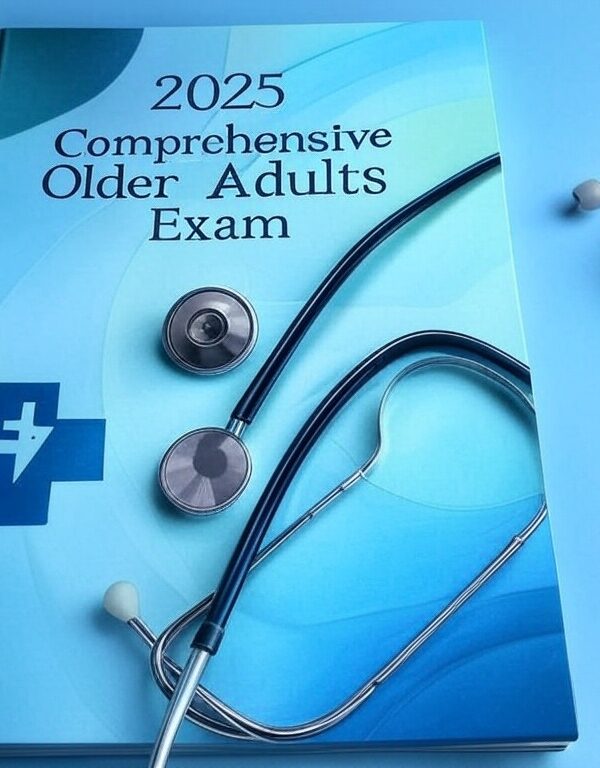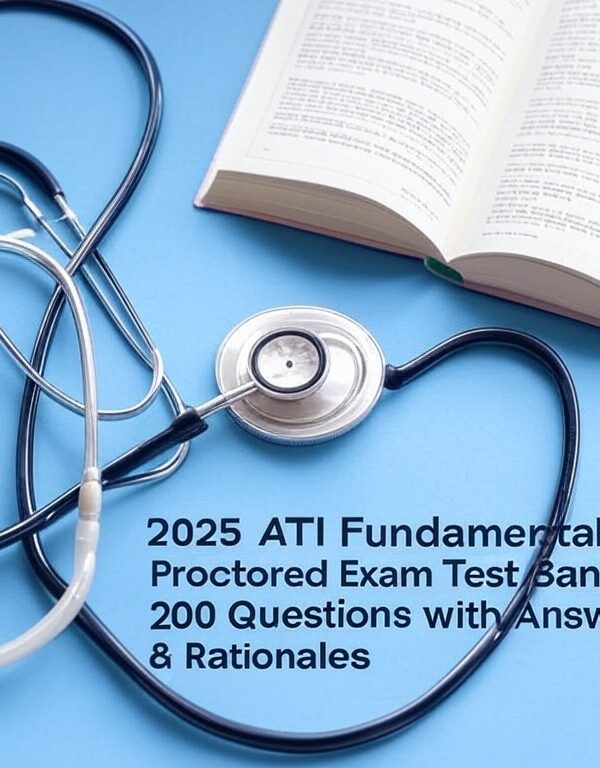-
Includes 120 proven practice questions for HESI 2025
-
Step-by-step solutions for physical assessment
-
Tailored for nursing students
-
Enhances confidence and mastery of key concepts
-
Ideal for HESI Physical Assessment exam prep
Preview
1. Which of the following techniques is used to assess muscle strength in a patient?
A. Apply an opposing force or resistance. ✅
B. Observe the patient at rest.
C. Percuss the muscle.
D. Palpate the muscle.
Correct Answer: A. Apply an opposing force or resistance.
Rationale: Assessing muscle strength involves asking the patient to contract a muscle while
the examiner applies opposing resistance. This determines the patient’s ability to overcome
force, a key part of strength grading. Observation, palpation, and percussion help in
assessment but do not evaluate strength directly.
2. What does a goniometer measure?
A. Muscle strength
B. Joint stability
C. Cranial nerve function
D. Angles of extension and flexion ✅
Correct Answer: D. Angles of extension and flexion
Rationale: A goniometer is an instrument used to measure the range of motion (ROM) in
joints. It helps assess limitations in movement by providing an exact angle of flexion and
extension, which is useful in musculoskeletal evaluations.
3. Neck flexion and extension should be:
A. 90 degrees
B. 70 degrees
C. 30 degrees
D. 45 degrees ✅
Correct Answer: D. 45 degrees
Rationale: Normal range of motion for both neck flexion and extension is about 45 degrees.
Any significant deviation may suggest issues with musculoskeletal alignment, neurological
impairment, or soft tissue injury.
4. Which of the following findings in a musculoskeletal assessment would be considered
abnormal?
A. Nodules
B. Bogginess
C. Symmetry
D. Both A and B ✅
Correct Answer: D. Both A and B
Rationale: Nodules and bogginess are abnormal findings. Nodules may suggest arthritis or
gout, and bogginess can be indicative of inflammation or joint effusion. Symmetry, in
contrast, is a normal finding.
5. What is an increased thoracic curvature, common in older adults, called?
A. Scoliosis
B. Lordosis
C. Kyphosis ✅
D. Swayback
Correct Answer: C. Kyphosis
Rationale: Kyphosis is a forward rounding of the back, typically in the thoracic spine,
commonly seen in older adults due to degenerative changes, osteoporosis, or poor posture.










Reviews
There are no reviews yet.